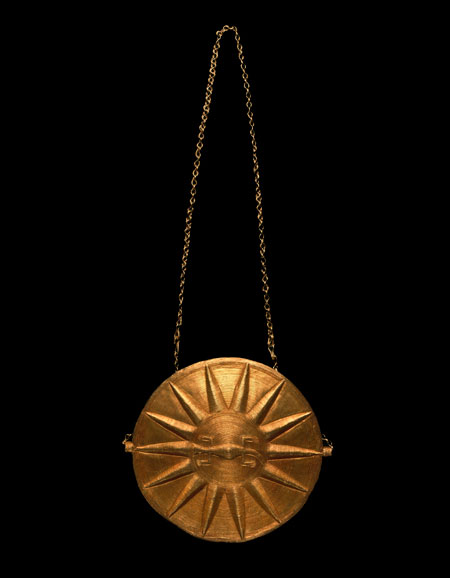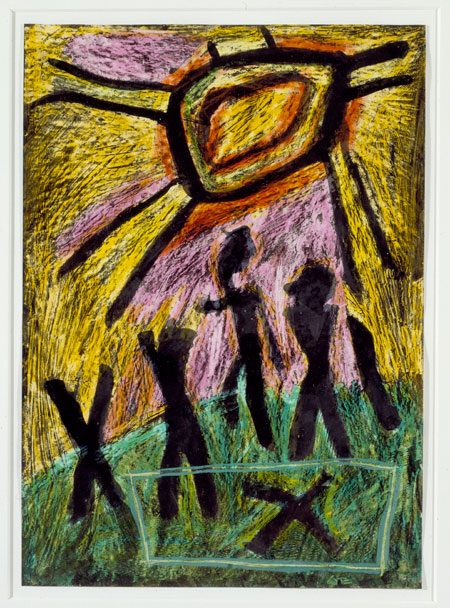Exhibit:
Introduction | Ancient sky-watchers | Celestial deities in the time of the pharaohs | Cosmic connectors | The sun at which one cannot stare | Without the moon, there would be no life | Lunar enlightenment | Cosmic models | Celestial guidance | A universe of possibilities |
Education:
Astronomy in Africa | ArtLAB+ interviews | Star sounds | Cosmos diary (blog) | African Cosmos (Twitter) | Family guide | A Galaxy of Activities | Teacher Lesson Plans | Sons of the Moon DVD
The sun--its commanding presence in the sky, its brightness too strong to look at, its light and warmth essential for life--is a powerful symbol for the divine.
Depictions of the sun are rare in Africa's traditional arts, but ideas about the sun underscore its ever-present influence. In some traditions on the continent and in the African diaspora, the rising and setting of the sun and its path across the sky each day suggest the cycle of life, from birth to adulthood to death and rebirth.

A priest of Vodun draws a cross within a circle to create a sacred space where spirits are welcomed. This sign depicting the four moments of the sun connects to the cycle of life and to the spiritual crossroads where human beings and the spirit world meet and communicate.
Carrefour, Haiti, 1968
Photograph by Graham Stuart McGee
Carrefour, Haiti, 1968
Photograph by Graham Stuart McGee



